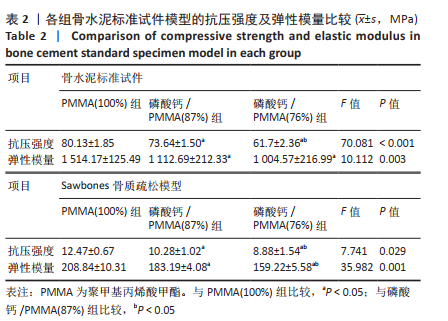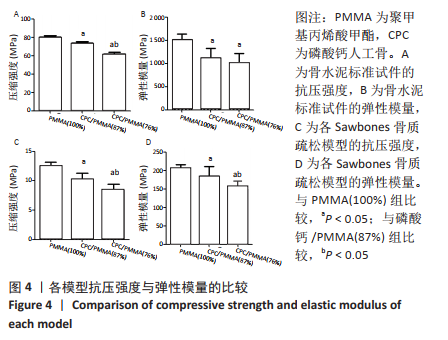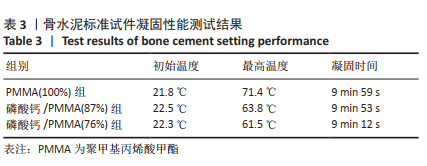[1] HE Z, ZHAI Q, HU M, et al. Bone cements for percutaneous vertebroplasty and balloon kyphoplasty: Current status and future developments. J Orthop Translat. 2014;3(1):1-11.
[2] RIEK AE, TOWLER DA. The pharmacological management of osteoporosis. Mo Med. 2011;108(2):118-123.
[3] KALLMES DF, JENSEN ME. Percutaneous vertebroplasty. Radiology. 2003;229(1):27-36.
[4] WANG H, SRIBASTAV SS, YE F, et al. Comparison of Percutaneous Vertebroplasty and Balloon Kyphoplasty for the Treatment of Single Level Vertebral Compression Fractures: A Meta-analysis of the Literature. Pain Physician. 2015;18(3):209-222.
[5] HEINI PF, WÄLCHLI B, BERLEMANN U. Percutaneous transpedicular vertebroplasty with PMMA: operative technique and early results. A prospective study for the treatment of osteoporotic compression fractures. Eur Spine J. 2000;9(5):445-450.
[6] LIN D, HAO J, LI L, et al. Effect of Bone Cement Volume Fraction on Adjacent Vertebral Fractures After Unilateral Percutaneous Kyphoplasty. Clin Spine Surg. 2017;30(3):E270-E275.
[7] FRIEDMAN CD, COSTANTINO PD, TAKAGI S, et al. BoneSource hydroxyapatite cement: a novel biomaterial for craniofacial skeletal tissue engineering and reconstruction. J Biomed Mater Res. 1998;43(4): 428-432.
[8] MILLER PD. Management of severe osteoporosis. Expert Opin Pharmacother. 2016;17(4):473-488.
[9] KHANNA AJ, LEE S, VILLARRAGA M, et al. Biomechanical evaluation of kyphoplasty with calcium phosphate cement in a 2-functional spinal unit vertebral compression fracture model. Spine J. 2008;8(5):770-777.
[10] KIM SB, KIM YJ, YOON TL, et al. The characteristics of a hydroxyapatite-chitosan-PMMA bone cement. Biomaterials. 2004;25(26):5715-5723.
[11] ORYAN A, ALIDADI S, BIGHAM-SADEGH A, et al. Healing potentials of polymethylmethacrylate bone cement combined with platelet gel in the critical-sized radial bone defect of rats. PLoS One. 2018;13(4): e0194751.
[12] PAHLEVANZADEH F, BAKHSHESHI-RAD HR, ISMAIL AF, et al.
Development of PMMA-Mon-CNT bone cement with superiormechanical properties and favorable biological properties for use in bone-defect treatment. Mater Lett. 2019;240:9-12.
[13] BUCHTOVÁ N, D’ORLANDO A, JUDEINSTEIN P, et al. Water dynamics in silanized hydroxypropyl methylcellulose based hydrogels designed for tissue engineering. Carbohydr Polym. 2018;202:404-408.
[14] BAUDÍN C, BENET T, PENA P. Effect of graphene on setting and mechanical behaviour of tricalcium phosphate bioactive cements. J Mech Behav Biomed Mater. 2019;89:33-47.
[15] SMITH BT, LU A, WATSON E, SANTORO M, et al. Incorporation of fast dissolving glucose porogens and poly(lactic-co-glycolic acid) microparticles within calcium phosphate cements for bone tissue regeneration. Acta Biomater. 2018;78:341-350.
[16] APARICIO JL, RUEDA C, MANCHÓN Á, et al. Effect of physicochemical properties of a cement based on silicocarnotite/calcium silicate on in vitro cell adhesion and in vivo cement degradation. Biomed Mater. 2016;11(4):045005.
[17] CHEN Z, LIU H, LIU X, et al. Injectable calcium sulfate/mineralized collagen-based bone repair materials with regulable self-setting properties. J Biomed Mater Res A. 2011;99(4):554-563.
[18] BAE H, SHEN M, MAURER P, et al. Clinical experience using Cortoss for treating vertebral compression fractures with vertebroplasty and kyphoplasty: twenty four-month follow-up. Spine (Phila Pa 1976). 2010;35(20):E1030-1036.
[19] YANG J, ZHANG KR, FAN JP, et al.Preparation of calcium phosphate cement and polymethyl methacrylate for biological composite bone cements. Med Sci Monit. 2015;21:1162-1172.
[20] HOLUB O, LÓPEZ A, BORSE V, et al. Biomechanics of low-modulus and standard acrylic bone cements in simulated vertebroplasty: A human ex vivo study. J Biomech. 2015;48(12):3258-3266.
[21] ROBO C, HULSART-BILLSTRÖM G, NILSSON M, et al. In vivo response to a low-modulus PMMA bone cement in an ovine model. Acta Biomater. 2018;72:362-370.
[22] RHO JY, KUHN-SPEARING L, ZIOUPOS P. Mechanical properties and the hierarchical structure of bone. Med Eng Phys. 1998;20(2):92-102.
[23] PHAKATKAR AH, SHIRDAR MR, QI ML, et al. Novel PMMA bone cement nanocomposites containing magnesium phosphate nanosheets and hydroxyapatite nanofibers. Mater Sci Eng C Mater Biol Appl. 2020; 109:110497.
[24] BOGER A, BOHNER M, HEINI P, et al. Properties of an injectable low modulus PMMA bone cement for osteoporotic bone. J Biomed Mater Res B Appl Biomater. 2008;86(2):474-482.
[25] BOGER A, BISIG A, BOHNER M, et al. Variation of the mechanical properties of PMMA to suit osteoporotic cancellous bone. J Biomater Sci Polym Ed. 2008;19(9):1125-1142.
[26] GUTIÉRREZ-MEJÍA A, HERRERA-KAO W, DUARTE-ARANDA S, et al. Synthesis and characterization of core-shell nanoparticles and their influence on the mechanical behavior of acrylic bone cements. Mater Sci Eng C Mater Biol Appl. 2013;33(3):1737-1743.
[27] LÓPEZ A, HOESS A, THERSLEFF T, et al. Low-modulus PMMA bone cement modified with castor oil. Biomed Mater Eng. 2011;21(5-6): 323-332.
[28] CUCURUZ AT, ANDRONESCU E, FICAI A, et al. Synthesis and characterization of new composite materials based on poly(methacrylic acid) and hydroxyapatite with applications in dentistry. Int J Pharm. 2016;510(2):516-523.
[29] BAI H, WALSH F, GLUDOVATZ B, et al. Bioinspired Hydroxyapatite/Poly(methyl methacrylate) Composite with a Nacre-Mimetic Architecture by a Bidirectional Freezing Method. Adv Mater. 2016; 28(1):50-56.
[30] BAI M, YIN H, ZHAO J, et al. Application of PMMA bone cement composited with bone-mineralized collagen in percutaneous kyphoplasty. Regen Biomater. 2017;4(4):251-255.
[31] CHEN LH, TAI CL, LEE DM, et al. Pullout strength of pedicle screws with cement augmentation in severe osteoporosis: a comparative study between cannulated screws with cement injection and solid screws with cement pre-filling. BMC Musculoskelet Disord. 2011;12:33.
[32] GOLDSTEIN SA. The mechanical properties of trabecular bone: dependence on anatomic location and function. J Biomech. 1987; 20(11-12):1055-1061.
[33] MORGAN EF, KEAVENY TM. Dependence of yield strain of human trabecular bone on anatomic site. J Biomech. 2001;34(5):569-577.
[34] GÓMEZ S, VLAD MD, LÓPEZ J, et al. Characterization and three-dimensional reconstruction of synthetic bone model foams. Mater Sci Eng C Mater Biol Appl. 2013;33(6):3329-3335.
[35] Sawbones®EuropeAB[http://www.sawbones.com/products/bio/testblocks/rigidfoam.aspx]
[36] International Organization for Standardization standard 5833 (ISO 5833). https://www.iso.org/home.html
[37] MONTAÑO CJ, CAMPOS TPR, LEMOS BRS, et al. Effects of hydroxyapatite on PMMA-HAp cement for biomedical applications. Biomed Mater Eng. 2020;31(3):191-201.
[38] BOGER A, WHEELER KD, SCHENK B, et al. Clinical investigations of polymethylmethacrylate cement viscosity during vertebroplasty and related in vitro measurements. Eur Spine J. 2009;18(9):1272-1278.
[39] LU Q, LIU C, WANG D, et al. Biomechanical evaluation of calcium phosphate-based nanocomposite versus polymethylmethacrylate cement for percutaneous kyphoplasty. Spine J. 2019;19(11):1871-1884.
[40] GHAFFARI S, SOLATI-HASHJIN M, ZABIHI-NEYSHABOURI E, et al. Novel calcium phosphate coated calcium silicate-based cement: in vitro evaluation. Biomed Mater. 2020;15(3):035008.
[41] AGHYARIAN S, HU X, HADDAS R, et al. Biomechanical behavior of novel composite PMMA-CaP bone cements in an anatomically accurate cadaveric vertebroplasty model. J Orthop Res. 2017;35(9):2067-2074.
[42] DENG XG, XIONG XM, CUI W, et al. Preliminary application of CPC/PMMA composite bone cement in kyphoplasty for the elderly. Zhongguo Gu Shang. 2020;33(9):831-836.
[43] JI X, XU F, DONG G, et al. Loading necrostatin-1 composite bone cement inhibits necroptosis of bone tissue in rabbit. Regen Biomater. 2019; 6(2):113-119.
[44] KIM HW, KIM HE, SALIH V. Stimulation of osteoblast responses to biomimetic nanocomposites of gelatin-hydroxyapatite for tissue engineering scaffolds. Biomaterials. 2005;26(25):5221-5230.
[45] TAN F, NACIRI M, DOWLING D, et al. In vitro and in vivo bioactivity of CoBlast hydroxyapatite coating and the effect of impaction on its osteoconductivity. Biotechnol Adv. 2012;30(1):352-362.
[46] CAMPANA V, MILANO G, PAGANO E, et al. Bone substitutes in orthopaedic surgery: from basic science to clinical practice. J Mater Sci Mater Med. 2014;25(10):2445-2461.
[47] DALBY MJ, DI SILVIO L, HARPER EJ, et al. Increasing hydroxyapatite incorporation into poly(methylmethacrylate) cement increases osteoblast adhesion and response. Biomaterials. 2002;23(2):569-576. |
 文题释义:
文题释义:




